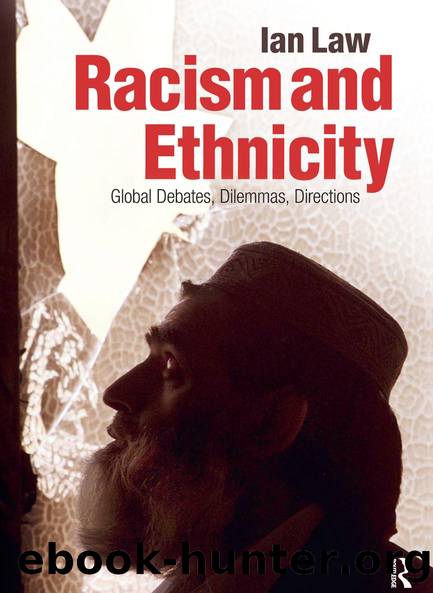Racism and Ethnicity by Ian Law

Author:Ian Law [Law, Ian]
Language: eng
Format: epub
Tags: Social Science, Sociology, General, Discrimination
ISBN: 9781317864356
Google: Ofu3AAAAQBAJ
Publisher: Routledge
Published: 2013-09-05T05:49:51+00:00
The UK's approach to 'race relations' policy
The liberal policy framework which emerged in the UK in the mid-1960s has been analysed by Michael Banton (1985) and Shamit Saggar (1992). Four elements of this framework have been identified: the notion of racial harmony as a public good; the philosophy of community relations; attempts to de-politicise issues of racism and migration; and the notion of a multi-racial society. The notion of racial harmony was largely displaced by the focus on racial equality by the mid to late 1970s, and it was belatedly marked by the change in name of Community Relations Councils to Racial Equality Councils in the early 1990s. But peripheralisation of policy and management with respect to domestic racism, which was evident in the devolution of policy making to local authorities and community relations agencies, remains a persistent feature in Britain. The notion of a multi-racial society carried with it a range of dubious assumptions including the view that prior to the migration of colonial subjects from Asia and the Caribbean, after the Second World War, Britain was a nation with definable boundaries enclosing a culturally homogenous political unit. This âcolouredâ migration was seen as fundamentally changing the nature of this political unit and hence a new multi-cultural society was being established which should be nurtured and fostered through policies of assimilation, integration and equal opportunity. This conception has been much criticised, but Miles (1993: 117â8) has usefully structured this criticism and has focused on three objections. Firstly, the making of the British nation state has always been partial and incomplete. The cultural integration of the British nation has never been achieved and, in that sense, the process of âincomplete nationalisationâ had therefore failed to deliver a unified British culture which could be counterposed to the âcultureâ of Asian and Afro-Caribbean migrants. Secondly, previous migrations of groups had occurred, including Irish, Jewish, Chinese and African people who were seen as belonging to biologically and culturally determined âracesâ. This was overlooked in the emphasis on the ânewnessâ of multi-culturalism. Thirdly, class divisions were perceived as having cultural and racial significance, with for example racialised notions of the poor as backward, uncivilised and living in the âdark underworldâ of Victorian inner cities and the ruling class as having different breeding and being a âraceâ apart. Douglas Lorimer (1978) points to the convergence of discourse relating to class, sexuality and âraceâ in the 1850s, and their subsequent elaboration in a wide variety of social contexts. These perceptions challenge the assumptions of cultural homogeneity.
Legal implementation of community relations policy and protection from racial discrimination began in 1965 and a summary is given below.
Download
This site does not store any files on its server. We only index and link to content provided by other sites. Please contact the content providers to delete copyright contents if any and email us, we'll remove relevant links or contents immediately.
| Anthropology | Archaeology |
| Philosophy | Politics & Government |
| Social Sciences | Sociology |
| Women's Studies |
Nudge - Improving Decisions about Health, Wealth, and Happiness by Thaler Sunstein(7261)
iGen by Jean M. Twenge(5167)
The Fire Next Time by James Baldwin(5029)
Adulting by Kelly Williams Brown(4243)
The Hacking of the American Mind by Robert H. Lustig(4094)
The Sports Rules Book by Human Kinetics(4081)
The Ethical Slut by Janet W. Hardy(4042)
Captivate by Vanessa Van Edwards(3733)
Mummy Knew by Lisa James(3525)
In a Sunburned Country by Bill Bryson(3376)
The Worm at the Core by Sheldon Solomon(3328)
Ants Among Elephants by Sujatha Gidla(3282)
Suicide: A Study in Sociology by Emile Durkheim(2908)
The Slow Fix: Solve Problems, Work Smarter, and Live Better In a World Addicted to Speed by Carl Honore(2846)
The 48 laws of power by Robert Greene & Joost Elffers(2818)
Humans of New York by Brandon Stanton(2694)
Handbook of Forensic Sociology and Psychology by Stephen J. Morewitz & Mark L. Goldstein(2606)
The Happy Hooker by Xaviera Hollander(2586)
The Tipping Point by Malcolm Gladwell(2566)
